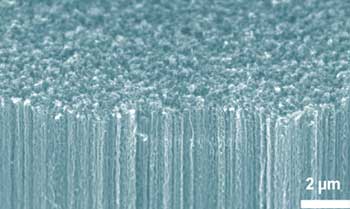Doing More With Less in Fuel Cells

The replacement of expensive and relatively rare materials with cheap and common materials, is the hallmark of "doing more with less." That was the motto of Buchminster Fuller, and other modern revolutionaries such as Julian Simon and Herman Kahn. In the field of fuel cells, the idea is being proven using doped carbon nanotubes as replacement for expensive platinum, for catalysts.
Researchers in the US have developed a novel catalyst based on carbon nanotubes for the electrochemical reduction of oxygen. The new material, they say, could be an effective and cheaper substitute for platinum in certain types of fuel cell.This is just one example of the materials revolution that is being enabled by new nanotech methods. And it is only the beginning. Fuel cells have been the promise of the future for far too long. With the help of the materials revolution, fuel cells will soon occupy a prominent place on the energy Acropolis.
The team, led by Liming Dai of the University of Dayton, created tightly packed, vertically aligned carbon nanotubes that were doped with nitrogen atoms. When these nanotube arrays were used as cathodes in highly alkaline solution, they were able to catalyse the reduction of oxygen more efficiently than platinum.
The researchers suggest that the nanotubes could be useful in alkaline fuel cells, which were developed decades ago but for a number of reasons have remained commercially unviable. One reason, Dai suggests, is the high cost of platinum which is used as a catalyst in the fuel cells' electrodes. _RSC
Labels: fuel cells, peak ingenuity

0 Comments:
Post a Comment
Subscribe to Post Comments [Atom]
<< Home